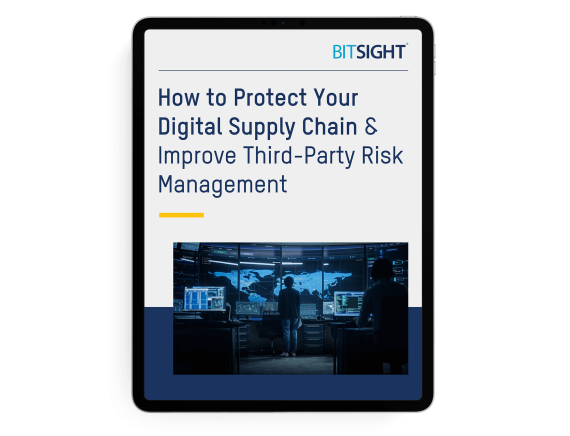4 Benefits of Successful Vendor Risk Management Programs
Tags:


As organizations look for solutions to address increasing risk across the digital supply chain, Vendor Risk Management (VRM) becomes critical, but it’s often overlooked or implemented unsuccessfully.
Traditionally, VRM programs rely on manual, time-consuming, and repetitive tasks that make them difficult to scale. In fact, 80% of legal and compliance leaders say that third-party risks were identified after initial onboarding and due diligence, suggesting traditional methods in vendor risk management fail to capture new and evolving risks.
So how can risk and security leaders improve their approach to vendor risk management?
The Problem With the Current Approach to VRM
The ultimate goal of a VRM program is to ensure that the use of third-party vendors does not compromise security or business continuity standards, by giving companies visibility into the vendors they work with and their security controls.
When implementing VRM practices, organizations often experience these common problems:
- Spending too much time and effort in emails and spreadsheets to conduct cybersecurity risk assessments and track requirements, sometimes weeks or months.
- Performing manual point-in-time assessments as opposed to continuous, ongoing risk monitoring.
- Sharing and storing critical security documents as email attachments or cloud-hosted links, often unencrypted.
- Relying on incomplete, outdated, or insufficient data to validate vendor responses and determine where the risks lie.
- Perceiving vendor risk assessments as a bottleneck, leading business units to engage with new vendors without involving security departments, and increasing the risk of Shadow IT.
This approach is difficult to scale as the business engages with more vendors, and fails to provide full visibility over the third-party risk landscape.
Four Benefits of Revisiting Your Vendor Risk Management Approach
High performing vendor risk management programs cover everything from due diligence, risk tiering, onboarding, risk monitoring, reassessments, and onboarding throughout the vendor lifecycle —all in a timely manner.
When rethinking your approach, consider that the ultimate purpose of VRM is to mitigate risk, not to perform assessments. The process should not only provide you with findings, but also allow you to take action on those findings.
These are the four key benefits that a better approach to VRM will bring to your organization:
1. Automating manual and repetitive tasks
Manual processes are typically resource-intensive for organizations and their vendors, involving one-off spreadsheets with questionnaires, multiple email follow-ups, and calendar reminders to conduct risk assessments and renewals.
69% of businesses rely on manual third-party risk management processes. (Forrester)
Business Units, IT, GRC, Security, Legal, Procurement, and other stakeholders often struggle with repetitive requests that feel like starting from scratch on every risk assessment, as questions and documentation requirements are similar across organizations. This approach is nearly impossible to scale, as it’s limited in scope, error prone, and has limited reporting capabilities.
A better approach to VRM means automating these tasks for faster, more strategic vendor assessments, where efforts can be focused on mitigating risk rather than collecting data.
2. Assessing and validating vendor security performance with confidence
Many programs base vendor risk assessments solely on questionnaires, asking about encryption, data retention, pentesting, and more. Because vendors are reporting on their own security posture, there is an opportunity for misinformation or inaccuracy in this approach. Vendors could easily misunderstand a question, mistakenly check the wrong box, or have a lack of knowledge about their controls, policies, and procedures.
The only way to effectively validate vendor responses is to complement them with objective data. Tools like Bitsight VRM provide a wide range of insights on vendors’ security controls that add another layer of verification to your vendor risk assessments, complementing security artifacts and questionnaires with objective findings.
In addition to triggering remediation requirements, these findings may give the vendor an opportunity to improve their security posture, ultimately fostering confidence across the supply chain.
3. Continuously managing vendor risk
Initial critical insights may come from the first ‘point-in-time’ assessment, but how can you guarantee that a vendor’s security controls are adequate for the remaining 364 days of the year? Over time, manual assessments yield less insight, are static in nature, and time-consuming.
A successful VRM program allows you to continuously monitor your vendors’ security controls, and notifies you about any changes in their security posture that may require you to take action, such as a drop in security ratings or exposure to a new vulnerability.
Many factors, including natural disasters, political unrest, or even a global pandemic, can change your risk appetite and security requirements, and your program should adapt accordingly. Bitsight provides best-in-class cybersecurity ratings and analytics for continuous monitoring, as well as multiple data feeds to gain additional insight into vendors’ financial health, geopolitical risk, privacy posture, and more, to easily detect what areas need attention.
4. Measuring and communicating vendor risk
One of the biggest gaps in manual VRM is the inability to quantify and communicate risk, which makes it difficult to show the value of the program. Successful VRM means being able to deliver clear, evidence-based vendor risk data that will help your program remain relevant and effective, while aiding decision-making.
To show that your VRM program is delivering value, you can report on activity, efficiency, and effectiveness, e.g., number of third-party risk assessments conducted, number of third-party due diligence engagements conducted per risk analyst over a specific time period, reduction of annual loss expectancies over time due to third-party risk management activities, and more.
How Can Bitsight Help?
Bitsight VRM automates vendor risk management from procurement all the way through the vendor relationship. With a customized workflow to match your organization’s requirements, risk tolerance, and program maturity, your team can combine streamlined risk assessments, vendor onboarding, and vendor monitoring with objective data to gain powerful insights.
As part of the unified Bitsight TPRM solution, powered by leading cybersecurity ratings and analytics, Bitsight VRM delivers a turnkey, intuitive, and customizable workflow engine to increase efficiency, improve your process, and have more control and confidence in your program.
Bitsight VRM provides you with:
- Faster vendor risk assessments powered by automation to retire manual tools like emails and spreadsheets.
- Improved efficiency and visibility to prioritize critical and high-risk vendors via a customized workflow.
- A network of 20,000+ vendor profiles to gain insights and history.
- Best-in-class cybersecurity ratings and analysis from Bitsight Continuous Monitoring.
- Multiple data feeds to get a pulse check into vendors’ financial health, privacy score, geopolitical risk, and more.
- Built-in communication to collaborate with vendors across the entire digital supply chain.
- The ability to respond confidently when major security events occur.



